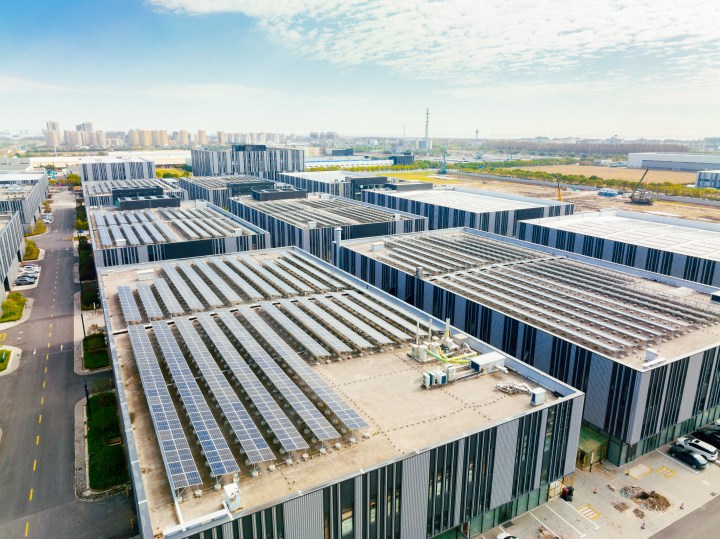SPONSORED CONTENT
Energy self-generation | Beat more than the shed

Bringing renewables into the energy mix of your home or business is about so much more than beating the shed. Here’s why it should be less grudge purchase, more critical investment.
Experts at a recent Investec event forecast the cessation of loadshedding by 2025 (best case) or 2027 (worst case). Or somewhere in between (we’ll take that, too).
Why then, as a business in South Africa already facing cost pressures, high inflation and record interest rates, would you fork out for solar panels, inverters and batteries? Just sit tight, right? There are several good reasons why that’s the wrong P of A:
- Renewable power widens margins
- Using clean energy attracts talent, customers and investors
- The right solution creates certainty and confidence
- Excess energy generated is a new revenue line
- Going renewable makes you feel part of something bigger
Bringing renewables into your energy mix is about so much more than beating the shed. It’s less grudge purchase, more critical investment.
During ’The Business of Power’ event hosted by Investec, a panel of renewables experts discussed the latest developments in the industry, with a focus on how and why businesses are choosing to make these investments.
“By procuring power from renewable energy sources, not only are South African businesses assisting in meeting our climate goals, but they are also empowering themselves to lower their energy cost and ensure energy security,” said Karolina Wylie a consultant for Investec Power & Infrastructure Finance.
Great guns on generation
South Africa now has 4.4GW of installed solar PV capacity. In the first half of 2023, we imported roughly the same number of panels from China as Japan (third largest economy) and Australia (12th largest economy).
The catalyst for our solar PV demand is obvious. It’s the rise of innovative funding solutions, connecting that want to supply, that deserves mention. Francois van Themaat, CEO of Sustainable Power Solutions (SPS) and event panellist, elaborated:
“In terms of generation, businesses have three basic options. The first is an outright purchase of a system by the client, often accompanied by a long-term maintenance contract. The second is power purchase agreements (PPAs) where the client leases the system with no capital outlay. The third is a joint-ownership approach in which SPS and the client jointly provide funding, with SPS offering strategic guidance to facilitate the client’s gradual transition to renewable power.”
The idea of transitioning is attractive for many businesses. It allows them to experience renewable power without taking ‘blow-up-your-business’ financial risk. They can build their systems incrementally to see what works best.
To battery or not
Expensive things are always contentious; the batteries that store sunlight are no exception. Below are some of the hot discussion points the panellists handle in their day-to-day.
Battery v generator
“A generator is a source of power, whereas a battery can best be thought of as a bucket storage container. You can fill the bucket 10,000 times but you still need to get the power from somewhere. So, if you’re in a hospital or a luxury lodge or a factory that’s got very sensitive processes, you’ll likely always need a generator as a final backup,” explained Francois.
“However, if you run your generators more than 20% or 30% of the time, then batteries are definitely a cost saver and the convenience factor cannot be overstated.”
That said, commercial properties in South Africa are billed per kWh, the price of which increases during periods of peak demand. Those with batteries can switch to their lithium-stored juice to reduce costs, a strategy known as ‘peak shaving’, which works well with or without a generator.
Passing on the cost
Charl Alheit is the Chief Investment Officer of Solar Africa. Charl explained the key pain point faced by his customers:
“Many of our clients are property owners who have tenants. Their concern is that they make this big investment in batteries, but then how do they charge their tenants for this?” One way is to ensure that the onsite metering system can charge a different tariff during loadshedding hours or alternatively the owner can tie the cost of the battery into the tenants’ leases and escalation terms.
Size matters
When a business decides to give renewable power a go, any delays can be frustrating, especially if the system eventually goes live during a period where loadshedding decides to take time off. “Locally, we have the batteries to build three to four megawatt systems, with a lead time of roughly 10 to 14 weeks. But any bigger and you’ll be importing from the likes of China with lead times stretching beyond 20 weeks,” explained Charl.
Awake at the wheel
Most medium-to-large businesses are homed in tall skinny buildings; there’s about as much space for panels on the roof as there is between basement parking bays. Enter wheeling.
Solar arrays can be laid out somewhere less cramped – like the radiant but eerie Northern Cape – and ‘wheeled’ through Eskom’s grid infrastructure to wherever the power is needed. A key change in regulation has awakened the wheeling market:
“Wheeling was initially done on a one-to-one basis. So, if I built a plant, I was only allowed to wheel to one customer. Now producers can wheel to numerous customers from one plant. If grid constraints are resolved, this will lead to large-scale liberalisation of the energy market,” said Charl.
The one-to-many wheeling development is as good for energy consumers as it is for producers. If the clouds roll into the Northern Cape, businesses can switch to a producer catching rays in the Eastern Cape. Country-wide cold front? Switch to wind, geothermal or hydro.
What’s more, the ability to source renewable power from multiple producers injects competition into our energy marketplace. All manner of efficiencies result. Piecing together the optimal renewable power solution is where energy trading comes in.
Trading set to roar
If more progressive energy regulation is the engine of renewable power, energy traders are the grease making it purr. James Beatty is CEO of one such player, Enpower Trading. Here’s his summary of how it all works:
Energy trading has three core functions in South Africa:
- Aggregate consumer demand where, for example, we connect 10 times 10-megawatt customers to a 100-megawatt producer. The diversification reduces the risk for both parties, which attracts more capital and energy users.
- Blend renewable energy sources to achieve greater penetration. On-site solar can typically supply 20-30% of demand, and up to 50% with wheeling. With blended energy solutions we can get close to 100% which suits corporates with net-zero targets.
- Offer customers shorter contract periods than the legacy 20-year offtake agreements between independent power producers (IPPs) and their customers. Such flexibility substantially lowers the risk of transitioning to renewable power.
“The contracts also come with fixed escalations linked to CPI, giving consumers valuable predictability around the cost of electricity. Contrast that to the spasmodic NERSA-approved price increases.”
Business leaders want to use cheaper and cleaner power. The legacy barriers to that ideal are being brought down by the innovative and flexible solutions hustled up by energy traders.
Going coal Turkey
Turkey is an example of a country that faced a similar crisis to South Africa with rolling loadshedding in the early 2000s. In consultation with the IMF, the state power monopoly was unbundled into distribution, transmission and generation.
One of the most transformational changes was the privatisation of the state-owned regional companies operating the power distribution systems, leading to harmonised contracting and a surplus of electricity.
“The liberalisation and coordination between the public and private sectors helped solve the crisis and resulted in lower costs of power for the marketplace. Turkey’s experience could be a template for South Africa,” said James.
Ford thinking
Affordable labour, strong institutions and sophisticated financial markets are the primary draw cards for multinational companies weighing an investment in South Africa. Our renewable energy resources are moving onto that list.
“We have built a 13,5-megawatt solar system for Ford at the Silverton plant on a carport structure that houses their finished vehicles before they are shipped. At capacity, I think they can produce up to something like 720 Ford Rangers a day. It’s a good-news South African story,” concluded Charl.
Why would Ford make such an investment? To keep their assembly line rolling during loadshedding? Sure. But there’s more upside to it than that. DM/BM
















